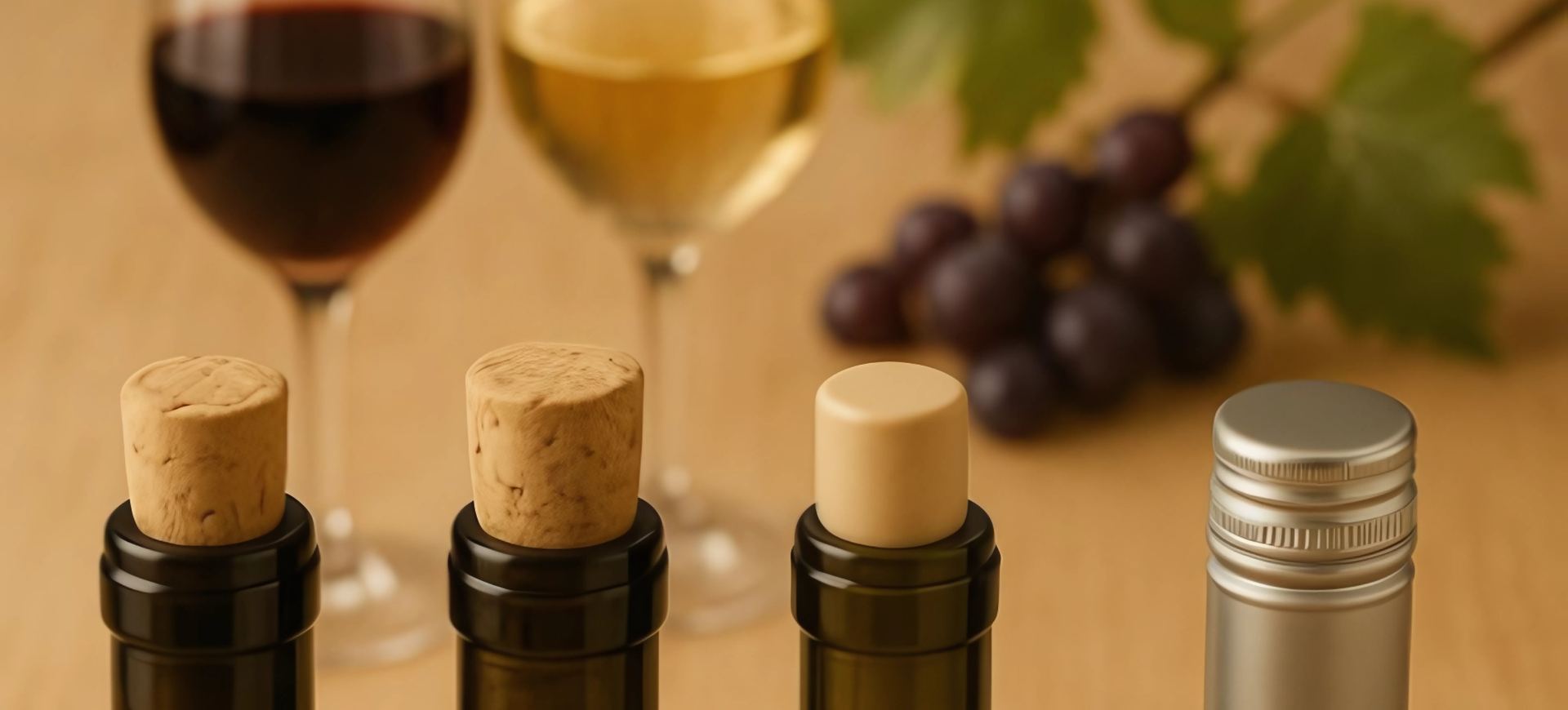Natural, composite, and synthetic cork: discover the differences between these types of wine closures and learn why the screw cap is the ideal modern alternative to preserve the freshness and quality of your wines.
Types of Wine Bottle Closures: Corks and the Screw Cap Alternative
The closure of a wine bottle is a crucial decision that can directly influence its preservation, evolution, and consumption experience. While natural cork has historically been the traditional method, today there are various options, each with different characteristics and benefits.
In this article, we present the three main types of cork used in the wine industry and the most popular modern alternative: the screw cap.
1. Natural Cork
This is the most traditional type of closure for wine bottles. It is extracted directly from the bark of the cork oak, a tree that mainly grows in the Mediterranean region.
It is primarily used in high-end wines and those with a long aging potential, as it allows controlled micro-oxygenation that favors the development of complexity in the wine over time.
Advantages:
-
-
Allows natural evolution of the wine through minimal and progressive oxygenation.
-
It is biodegradable, renewable, and environmentally friendly.
-
Adds symbolic, aesthetic, and traditional value highly appreciated by consumers.
-
Disadvantages:
-
-
May present problems such as TCA contamination, which leads to the so-called “cork taint.”
-
It is more expensive than other closure methods.
-
Does not always guarantee perfect uniformity between bottles.
-
2. Composite Cork
Composite cork is made from small pieces of natural cork bonded with a synthetic resin. It is a more economical option than natural cork and is usually used in mid-range wines intended to be consumed within one to three years.
Although it does not offer the same breathability as natural cork, it effectively fulfills its function for short- to medium-term wines.
Advantages:
-
-
Represents a good balance between cost and functionality.
-
Reduces waste by reusing leftover natural cork materials.
-
Offers an aesthetic closure accepted in the market.
-
Disadvantages:
-
-
Its breathability is limited, making it unsuitable for long-term aging wines.
-
Quality may vary depending on manufacturing processes and materials used.
-
3. Synthetic Cork
Made from plastic polymers, synthetic cork has gained ground in the industry due to its low cost and resistance to contaminants such as TCA. It is mainly used in young wines meant for short-term consumption.
This type of closure is designed to mimic the appearance and function of natural cork, although its properties differ.
Advantages:
-
-
Eliminates the risk of cork taint (TCA).
-
Offers consistent sealing without variation between bottles.
-
Easy to produce and compatible with automated industrial processes.
-
Disadvantages:
-
-
Does not allow the wine to evolve in the bottle, as it does not provide micro-oxygenation.
-
May convey a less “premium” image compared to traditional cork.
-
It is not biodegradable and has a greater environmental impact.
-

Other Closure Methods: Screw Cap
An alternative that has gained prominence in recent decades is the screw cap, also known as a “screw cap.” This method is increasingly associated with white, rosé, and young red wines consumed in the short term and that require precise, oxygen-free preservation.
Although it was once viewed as a lower-prestige option, today many recognized wineries choose it for its functionality and consistency.
Advantages:
-
-
Provides an airtight seal that prevents oxygen entry and guarantees freshness.
-
Free of TCA and other contaminants.
-
Easy to open, without the need for a corkscrew, enhancing consumer experience.
-
Very useful for exports, as it is unaffected by climatic or transport variations.
-
Disadvantages:
-
-
Some consumers still associate it with low-end wines, although this perception is changing.
-
Not suitable for wines that need to evolve in the bottle for many years.
-
Conclusion
The choice of the appropriate closure depends on the style of wine, its estimated consumption time, and the winery’s philosophy. Natural cork remains ideal for long-aging wines. Composite cork offers a functional and economical alternative for medium-term wines. Synthetic cork is practical and risk-free for young wines, while the screw cap is a modern, reliable solution perfect for preserving freshness.
There is no perfect closure for all cases, but there is one suitable for each wine. Choosing the right type of closure ensures the wine reaches the consumer with all its quality intact.
To learn more about the world of wine, the Rioja DOCa, and our winery, don’t hesitate to visit our blog every Thursday and follow us on social media: @ziniobodegas.